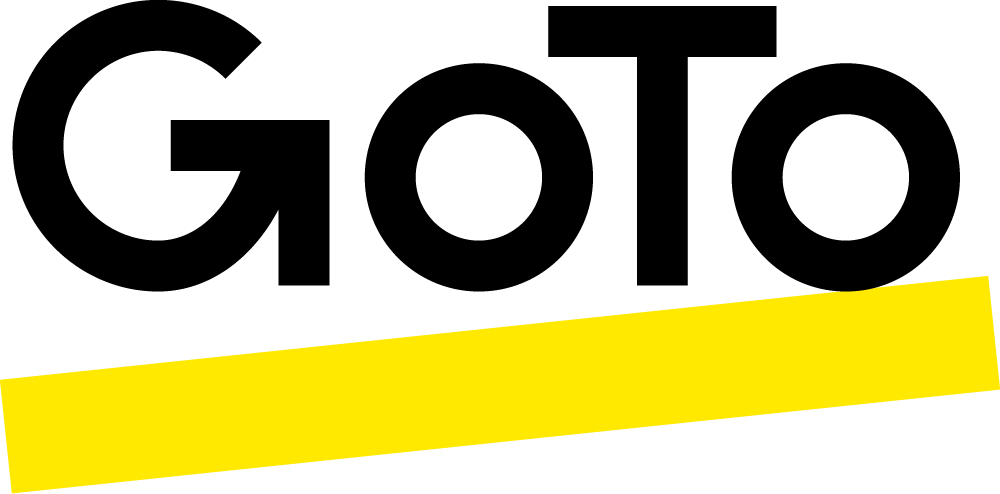Se stai cercando delle soluzioni per centri di contatto, probabilmente troverai soluzioni per centri di contatto inbound e outbound.
Qual è la differenza tra inbound e outbound e perché è importante? In poche parole, devi sapere cosa fa ogni tipo di soluzione per comprendere il pieno potenziale delle moderne soluzioni per centri di contatto basati sul cloud.
Cos'è una soluzione per centro di contatto inbound?
Un centro di contatto inbound gestisce le chiamate in entrata, i messaggi e le richieste di informazioni sui social media da parte di clienti e aziende sui prodotti e sui servizi di un'organizzazione. Con l'obiettivo primario di rispondere alle domande, risolvere i problemi e aumentare la soddisfazione dei clienti, la maggior parte delle soluzioni per centri di contatto inbound è specializzata in supporto tecnico, servizio clienti e gestione dei conti.
Casi d'uso comuni per soluzioni per centri di contatto inbound
- Servizio clienti e supporto
I servizi clienti e il supporto gestiscono le richieste, risolvono i problemi e assistono i clienti. Ad esempio, un'azienda di e-commerce con una sluzione per centro di contatto inbound potrebbe ricevere una chiamata da un cliente per un ritardo nella spedizione di un prodotto. L'agente può aiutare il cliente a conoscere lo stato della spedizione o a presentare una richiesta per accelerare il processo di spedizione. Diversi settori possono trarre vantaggio dalla risoluzione dei problemi, dall'aggiornamento delle informazioni sugli account, dalla modifica delle password e da altri servizi di supporto ai clienti che una soluzione per centro di contatto inbound gestisce.
- Supporto prodotto
Quando ci sono problemi tecnici legati a prodotti o servizi, i clienti tendono a chiamare per cercare di risolvere il problema. Ad esempio, un'azienda produttrice di software con una soluzione per centri di contatto inbound può avere un agente che guida il cliente con un processo passo-passo per l'utilizzo del prodotto o che lo assiste nella corretta installazione del software. Un supporto rapido ed efficace sui prodotti può portare a opportunità di upselling e a un'attività ripetuta.
Tipi di interazioni inbound
Le soluzioni per centri di contatto inbound svolgono un ruolo importante nel far sentire i clienti ascoltati e apprezzati. Ecco alcune delle interazioni con i clienti che gli agenti inbound gestiscono di solito:
- Richieste generali: i clienti possono avere domande, dubbi o bisogno di supporto sui prodotti o sui servizi che hanno acquistato. Inoltre, potrebbero voler sapere di più sugli orari di apertura, sulle promozioni e su eventuali modifiche.
- Richieste di informazioni sull'account e sulla fatturazione: i clienti esistenti possono rivolgersi a noi per modificare i dati del proprio account o per segnalare un problema di fatturazione. Potrebbero anche voler discutere dei rinnovi o degli aggiornamenti dei loro piani di sottoscrizione.
- Assistenza tecnica: queste interazioni avvengono quando i clienti hanno bisogno di supporto per risolvere problemi tecnici, di sistema o di software con un prodotto o un servizio specifico.
- Elaborazione degli ordini: i clienti possono anche chiedere informazioni sui loro ordini, segnalare ritardi, richiedere rimborsi o elaborare resi.
Cos'è una soluzione per centro di contatto outbound?
Una soluzione per centri di contatto outbound gestisce le attività di contatto proattivo effettuando chiamate in uscita a clienti e potenziali clienti. Il suo obiettivo principale è quello di mettere in contatto un'azienda con i suoi clienti attuali e potenziali per generare lead, condurre ricerche di mercato e realizzare vendite. Poiché una soluzione per centri di contatto outbound tende a fare più chiamate di quelle che ricevono, gli agenti lavorano di solito su un elenco di chiamate o utilizzano la composizione automatica.
Casi d'uso comuni per soluzioni per centri di contatto outbound
- Vendite e marketing
Una soluzione per centri di contatto outbound utilizza il telemarketing per raggiungere potenziali clienti e proporre prodotti che suscitino interesse. Questo a volte può significare contattare clienti che non si aspettano questa interazione o strategie di cold calling.
- Ricerca e sondaggio
Le chiamate in uscita non sono sempre finalizzate alla chiusura delle vendite: alcune vengono effettuate per condurre indagini su un prodotto o un servizio e per conoscere meglio il pubblico di riferimento. Le aziende possono utilizzare questi dati per migliorare i loro prodotti e i servizi o per sviluppare strategie di interazione migliori.
Tipi di interazioni outbound
Una soluzione per centri di contatto outbound mette in contatto le aziende con i potenziali clienti, promuove le vendite e elabora dati preziosi. Ecco i tipi più comuni di interazioni outbound che gestisce:
- Generazione di lead: gli addetti alle vendite individuano in modo proattivo i potenziali clienti che potrebbero non conoscere il prodotto o l'azienda. L'obiettivo è quello di suscitare interesse per un prodotto o un servizio e costruire una pipeline di vendita.
- Campagna di vendita diretta: gli agenti utilizzano una buona lista di contatti qualificati per proporre direttamente un prodotto o un servizio e convincerli all'acquisto. Queste campagne riducono la necessità di intermediari o distributori.
- Indagini sulla soddisfazione dei clienti: gli addetti raggiungono i clienti e raccolgono informazioni approfondite sulle loro impressioni e sul loro feedback sul prodotto o sui servizi. Le chiamate di follow-up possono essere effettuate anche per identificare piccoli problemi e curare le relazioni con i clienti.
- Ricerche di mercato: gli agenti entrano in contatto con clienti e potenziali clienti per raccogliere informazioni sulle loro preferenze, studiare il comportamento dei consumatori e monitorare le tendenze del mercato. Questi dati preziosi aiutano a sviluppare i prodotti e a guidare le strategie di marketing.
Le principali differenze tra soluzioni per centri di contatto inbound e outbound
Iniziamo dalle basi. Una soluzione per centro di contatto inbound riceve telefonate, testi, chat e messaggi dai social media. Un soluzione per centro di contatto outbound gestisce la messaggistica che va nella direzione opposta.
Tradizionalmente, una soluzione per centri di contatto inbound si occupava di questioni come il supporto clienti, mentre quelli outbound gestivano le vendite dirette e le ricerche di mercato. Non molto tempo fa, entrambi le soluzioni per centri di contatto richiedevano soluzioni tecnologiche elaborate: centri dati, monitor video, cuffie telefoniche e file di persone che prendevano ed effettuavano le chiamate.
Al giorno d'oggi, tuttavia, le aziende possono concludere un accordo con un fornitore di soluzioni per centri di contatto as a service (CCaaS) basate sul cloud e ottenere tutto ciò che serve per le chiamate in entrata e in uscita in un unico pacchetto software accessibile da qualsiasi dispositivo connesso a Internet.
Questo sottolinea il valore della conoscenza delle soluzioni tradizionali per centri di contatto inbound e outbound: se hai familiarità con un tipo di soluzione per centri di contatto, conoscere meglio l'altro tipo potrebbe rivelare opportunità a cui non avevi pensato.
I vantaggi del CCaaS basato sul cloud come soluzione per centri di contatto inbound e outbound
Le soluzioni CCaaS catturano e analizzano le interazioni degli agenti, generando preziose analisi e approfondimenti in tempo reale sul centro di contatto per definire strategie di formazione efficaci e migliorare le prestazioni complessive.
- Piattaforma unificata
CCaaS consolida le chiamate in entrata e in uscita, le chat, le e-mail, gli SMS, i messaggi sui social media e molto altro, tutto in un'unica dashboard. Grazie all'accesso ai dati rilevanti e ai flussi di lavoro automatizzati, i tuoi agenti possono collaborare in modo semplice e i centri di contatto possono snellire le operazioni, nonché ottimizzare i processi sia in entrata che in uscita.
- Esperienza clienti migliorata
Una soluzione per centri di contatto inbound trae vantaggio dalla capacità di CCaaS di consentire ai clienti di interagire con le aziende attraverso più punti di contatto utilizzando la risposta vocale interattiva (IVR). Gli agenti possono anche accedere alle informazioni di un cliente e alla cronologia degli ordini attraverso la piattaforma. Poiché gli agenti non devono passare da uno strumento all'altro, una soluzione per centri di contatto inbound può fornire tempi di risposta più rapidi e un supporto personalizzato.
Le piattaforme CCaaS possono anche generare un elenco di chiamate mirate in base ai dati dei clienti, alla cronologia degli acquisti e al loro comportamento per garantire che una soluzione per centri di contatto outbound raggiunga i potenziali clienti effettivi. Utilizza anche funzioni di composizione automatica e di smistamento delle telefonate per gestire i flussi di chiamate e ridurre i tempi morti in modo efficiente. Una soluzione per centri di contatto outbound può perfezionare le strategie di contatto con analisi in tempo reale per ottimizzare gli sforzi di interazione.
- Scalabilità e flessibilità
Le soluzioni basate sul cloud, come CCaaS, permettono alle aziende di gestire una soluzione per centri di contatto inbound e outbound senza bisogno di infrastrutture interne. Poiché il CCaaS è progettato per scalare in base alle esigenze aziendali, ti permette di espandere la tua attività durante le stagioni di punta e di ridimensionarla nei periodi di minore attività. Nella maggior parte dei casi, puoi acquistare CCaaS in sottoscrizione, con la possibilità di decidere il numero di agenti necessari per il tuo team. Paghi solo quello che usi ed eviti i costi iniziali dell'acquisto di hardware per centri di contatto.
Scegli tra una soluzione per centri di contatto inbound, outbound o ibrida
- Valuta le esigenze della tua azienda
La scelta tra soluzione per centri di contatto inbound e outbound dipende dagli obiettivi e dalle priorità della tua azienda. Se la tua azienda deve concentrarsi sulla gestione di grandi volumi di richieste di informazioni, resi o supporto, una soluzione per centri di contatto inbound è qualla più adatta a soddisfare queste esigenze. D'altra parte, se la tua attività richiede una maggiore attenzione alla generazione di lead, alle vendite e alle campagne di marketing, una soluzione per centri di contatto outbound è più adatta.
- Considerazioni su costi e risorse
Una soluzione per centri di contatto inbound necessita di un numero sufficiente di agenti per gestire volumi in continua evoluzione e garantire tempi di risposta rapidi, nonché un'eccellente qualità del servizio. Ci saranno dei costi legati all'assunzione e alla formazione degli agenti, ma ottimizzare l'esperienza cliente può migliorare la tua brand reputation e tradursi in ricavi a lungo termine.
Anche una soluzione per centri di contatto outbound necessita di personale sufficiente, ma ci saranno altri costi associati all'investimento in sistemi di composizione automatica, strumenti di analisi e integrazioni CRM per un targeting migliore dei clienti. Il lato positivo è che campagne outbound efficaci possono generare nuovi contatti, aumentare le vendite e fornire preziose informazioni di mercato.
- Vantaggi di un approccio ibrido
Se pensi che la tua azienda abbia bisogno di un approccio che includa entrambe le soluzioni, puoi combinare i servizi inbound e outbound per ottimizzare tutte le comunicazioni con i clienti in un unico sistema. Un centro di contatto ibrido offre un'esperienza cliente a tutto tondo, creando un'opportunità di comunicazione bidirezionale tra la tua azienda e i clienti. Gli agenti possono assistere le richieste dei clienti in entrata e avviare chiamate iniziali o follow-up con una visione più ampia. Un approccio ibrido elimina la ricerca manuale e le domande ripetute, contribuendo a migliorare la soddisfazione dei clienti.
Considerazioni finali
Una soluzione per centri di contatto inbound riceve le richieste dei clienti e fornisce servizi di supporto, mentre la soluzione per centri di contatto outbound avvia i contatti per le vendite e sviluppa l'interazione. Con la giusta soluzione basata sul cloud, però, è possibile gestire entrambe le soluzioni per centri di contatto in un unico sistema.
Scopri come GoTo Contact Center può trasformare le tue interazioni con i clienti.








